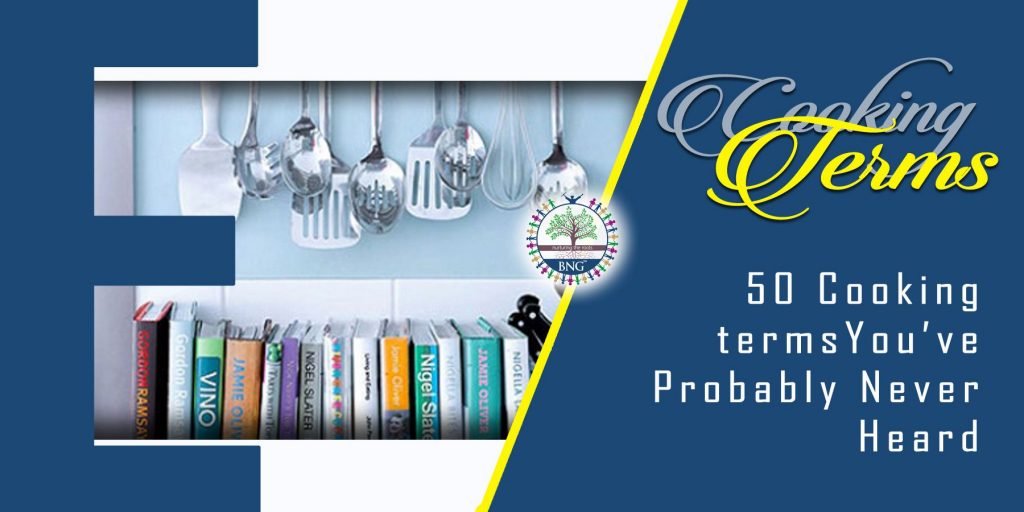Culinary Terms E
#Eclair : Choux pastry filled with custard or creamand coated with chocolate.
#EMINCE : Cut fine.
#Entree : A dish served in the first part of a dinner, usually a less formal meal.
#Entremets : Hot or cold sweets. Culinary Terms E X15
#EPIGRAMME : Breast of lamb with bone.
#Escalopes : Thin slices of meat dipped in egg and breadcrumbs and then fried
#Espagnole : A rich brown sauce.
#ESSENCE : An extract or concentrate obtained from a plant or other matter and used for flavouring or scent.
#Estoutfade : Brown stock.
#Éclair – A finger-shaped bun made by piping lengths of choux pastry onto greased baking trays and baking them until crisp. The cooked pastry is split open and filled with cream or custard and topped with chocolate or coffee icing (frosting). Culinary Terms E s23
#Egg – A roundish reproductive body enclosed in a protective shell. Most commonly eaten by humans is the egg of the domestic hen, but duck, goose, quail, pheasant, guinea fowl, partridge, plover, ostrich, and emu eggs are also used. In some parts of the world the fish-flavoured, soft-skinned egg of the sea turtle is an important food. The egg is a highly nutritious and well-balanced package: two eggs provide half of the body’s total daily protein and vitamin needs. The yolk, about 30% of the total weight of the egg, contains more than 80% of its protein.
Most eggs are from hens caged in large, temperature – controlled and artificially lit sheds. Free-range eggs are from birds with access to outside runs and are reckoned by many to have a better flavour.
Eggs are best used as fresh as possible. Two simple, age-old methods of testing freshness are based on the fact that the little weight and moisture lost each day by evaporation through the porous shell is replaced by air in the sac at the round end of the egg. To assess the freshness of egg either put it in a bowl of water (a fresh egg will sink to the bottom) or hold it up to a strong light (the larger the air sac the older the egg). Alternatively, a fresh egg broken onto a plate will have a well-rounded yolk centered in a thick, sticky white; in an older egg the white is runny and the yolk flattened.
Other eggs besides that of the hen are also used. The more richly flavoured duck egg is eaten in England, Holland, and Belgium and in parts of Asia. The famous ‘thousand-year’ or hundred-years’ eggs of China are usually raw duck eggs, kept for several months buried in a mixture of salt, lime, ash and tea leaves until the shell is marbled black, the white firm and pale brown, and the yolk-veined with a texture of creamy cheese.
The Egyptians ate both ostrich (a single ostrich egg, about twenty times the size of a hen egg, can make an omelette for ten people) and pelican eggs. Peahen eggs were eaten in ancient Rome. In modern time’s pheasant, quail, partridge and plover eggs are used hard-boiled in salads, pickled in brine or preserved in aspic.
Many rites are associated with the egg. From the time of ancient Rome eggshells were crushed to prevent evil spirits from hiding in them. The egg has long been a symbol of fertility and renewal. The brightly wrapped Easter egg of modern times has its origins in the coloured eggs that were a feature of spring festivals of medieval Europe.
#Empanada – A pie or pastry shell filled with meat or fish. The dish originated in Spain where empanadas are now usually made with flaky pastry and are often eaten cold. The dish is now also popular in parts of Central and South America, where it often features spicy meat filling and is served hot as an appetizer.
#EnglishMuffin – A round, flat, unsweetened yeast bun served split and toasted, buttered and spread with jam or honey or a savoury topping.





